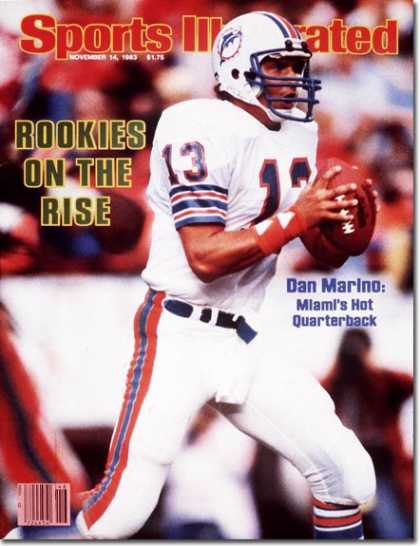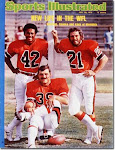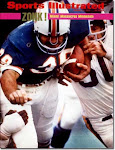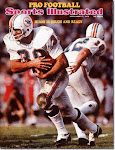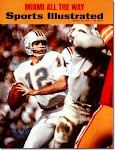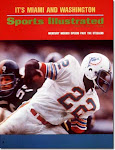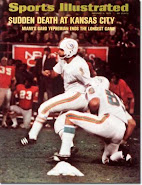
http://iuhoosiers.cstv.com/
Wrote this first just a little while ago at my other blog, Hallandale Beach Blog.
The Herald's first online story about Lou Saban's death came at 4:40 pm via some wire copy that neglected to include his record at U-M in 1977 and '78 of 3-8 and 6-5, and with a photo that wasn't even of him at Miami, a photo that goes un-credited, like so many photos at the Herald these days not taken by Herald photographers.
I guess the photos just magically appear out of thin air!-
The former IU Hoosier player (IU Hall of Fame, Class of 1982; while I was there) and Hurricanes head coach certainly deserved much better than this crummy lite story, but then so do the much-abused Herald readers!
(A forthcoming blog post here and at South Beach Hoosier, already written, will count the myriad ways that the Herald's sports section has become a veritable laughingstock
over the past five years to any serious sports fan.)
And in case you forgot or never knew, Lou Saban's last game as head coach of the Hurricanes was a 22-21 defeat of the Gators in 1978.
At Gainesville.
That's how you do it!
My guess is that when Randy Shannon finally gets fired early next year, one year too late, it'll be after another in a long line of the very confusing and half-assed losses that have become commonplace under him, begging once more the inevitable question that never really quite goes away: why was someone without any prior major college head coaching
experience ever hired in the first place?-
Longtime football coach Lou Saban dies
BY SPORTS NETWORK
THE SPORTS NETWORK
Lou Saban, the longtime college and pro football coach who led the Buffalo Bills to a pair of AFL championships, died early Sunday morning at the age of 87.
Saban coached professional football for 16 years, and most notably led Buffalo to back-to-back AFL titles in 1964-65. He also coached the Boston -- now New England -- Patriots for their first two seasons, in 1960-61 before moving on to Buffalo from 1962-65.
He spent five seasons with Denver (1967-71), overseeing the team through the AFL-NFL merger, and returned to the Bills from 1972-76. Saban's pro teams went 95-99-7.
Away from football, Saban was also president of the New York Yankees from 1981-82.
"He has been my friend and mentor for over 50 years, and one of the people who helped shape my life," Yankees owner and chairperson George M. Steinbrenner said in a statement. "Lou was tough and disciplined, and he earned all the respect and recognition that came his way. He spent a lifetime leading, teaching and inspiring, and took great satisfaction in making the lives around him better. This is a tremendous loss to me personally, and I extend my deepest condolences to his wife, Joyce, and the entire Saban family."
Saban's coaching career also included stints at numerous colleges, Northwestern, Western Illinois, Maryland, Miami, Army and Central Florida.
Saban played college football at Indiana and was with the Cleveland Browns from 1946-49 before moving onto coaching.
___________________________
Former Herald sports writer Jim Martz sets some folks straight who seem
confused about the role of Hurricane QBs in their modern football history.
My first Hurricanes home game was in 1972, and until I left for Bloomington
in August of 1979, I went to well over 95% of their home games at the
Orange Bowl.
Miami Herald
An open letter to UM quarterback Jacory Harris
Allow me to invite you to a new history course: Miami Hurricanes Quarterbacks 101. You can bring along fellow freshman quarterbacks Cannon Smith and Taylor Cook. This class should be required for all incoming quarterbacks at the "U." It's not about X's and O's, it's about learning how the great UM quarterbacks became great, how they all needed to be patient and wait their turn.
I'll be the instructor, and I'm not going to talk about reading defenses or calling audibles. I didn't play college football, unless you count being a wide receiver and cornerback on a fraternity flag football team at a Division III school in Michigan. But I have seen every Hurricane team since the 1970s, and I watched the program become Quarterback U, a tradition that has taken a hit lately.
In the modern era of Hurricane football, beginning with 1979 and the arrival of Howard Schnellenberger as coach, there have been seven great quarterbacks: Jim Kelly, Bernie Kosar, Vinny Testaverde, Steve Walsh, Craig Erickson, Gino Torretta and Ken Dorsey. Five of them won national championships. Of the two who didn't, one (Testaverde) won the Heisman Trophy and the other (Kelly) was injured most of his senior year but went on make the Pro Football Hall of Fame.
Here's your first quiz: Do you know what these quarterbacks had in common?
True, they were all right-handed. But that's irrelevant. Answer: Each sat on the bench most or all of their freshman season. They waited their turn. Obviously none transferred. There have been several UM quarterbacks who did transfer. And each one virtually disappeared from the face of college football. The ones who stayed, who paid their dues, so to speak, saw their patience rewarded. You've been patient this season, too, and that paid off in a 49-31 victory at Duke. When Robert Marve struggled, you came in and led the Hurricanes to 35 unanswered points and threw four touchdown passes.
I liked what you said after the game on the Hurricane Sports Network: "I appreciate all the times that Coach Shannon puts me into the game. Whenever it is I'm happy to go into the game, whether it's to bring my team back or keep them ahead. It doesn't matter when I get in or if I get in. I just want the team to win, that's all I worry about."
That's the kind of patience the great ones at UM have needed. Take Testaverde, for instance. He sat for three years before he became "the man," then he led the Hurricanes to the Sugar and Fiesta Bowls, came within one play of winning the national championship and won the Heisman Trophy. He also went on to an NFL career that started before you were born and just ended after 22 years.
Kelly, Kosar, Walsh and Torretta all were redshirted their freshman season. They didn't get quality playing time like you are getting in every game. Yet each one, when he got his chance, played well and took command of the offense.
KELLY'S ODYSSEY
I'll begin these history lessons with Kelly, who was part of Lou Saban's great recruiting class of 1978. That was in the days when the Hurricanes invariably had three quarterbacks -- one departing, one coming and one playing. One quarterback quit in the summer. One incumbent, a senior, was moved to receiver. Another, Kenny McMillian, was injured in the first game. Saban had three freshmen -- Kelly, Mark Richt (now coach at Georgia) and Mike Rodrigue. He went with Rodrigue, who spent most of the season handing off to senior tailback Ottis Anderson, who is still UM's all-time rushing leader.
Saban resigned after that 6-5 season, Schnellenberger took over and started Rodrigue the first seven games in 1979. For the eighth game, the coach decided at the last moment to go with Kelly, who barfed in the locker room before the game, then went on to lead a shocking 26-10 victory at Penn State. That was the genesis of Quarterback U.
The next year Kelly spearheaded the Hurricanes to the Peach Bowl, their first bowl game in 13 seasons. His junior year they went 9-2, losing only to fourth-ranked Texas and 16th-ranked Mississippi State on the road in close games. In the third game of his senior year, 1982, he sustained a dislocated shoulder at Virginia Tech in the third game and was lost for the season.
That same season, the Hurricanes had two freshmen quarterbacks, Kosar and a guy listed in the media guide as Vincent Testaverde. Neither was among the six quarterbacks on the Parade Magazine All-American high school team, but Schnellenberger and his staff rated them as two of the top three quarterbacks in the nation. Plus there was Richt, a senior, and Kyle Vanderwende, a redshirt freshman, who had been all-state at Palm Beach Gardens. That year the Hurricanes arguably had the greatest collection of college quarterbacks in history. Earl Morrall, a former Baltimore Colts and Miami Dolphins star quarterback, was their coach. He attended the flag football game between the Canes and Dolphins in the Orange Bowl's farewell several months ago and agreed this was the best quarterback group ever at one college.
And none transferred.
WAITING THEIR TURN
Jacory, if you want to learn about patience, talk to Kosar and Testaverde. Kosar, who had been Mr. Ohio Football, didn't play at all in 1982. Testaverde, an honorable mention All-American in high school, was fourth string and played briefly in the ninth and 10th games, completing 5 of 12 passes for 79 yards.
Going into the 1983 season, Vanderwende, who went 2-1 as the starter at the end of 1982, and Kosar and Testaverde were considered equal. Schnellenberger picked Kosar "by a whisker" based on "a combination of intelligence, leadership and ability." The Hurricanes lost the opener at Florida 28-3, but Kosar's performance convinced Schnellenberger he had made the right pick. They didn't lose another game, knocking off heavily favored Nebraska in the Orange Bowl Classic to win UM's first national championship.
Testaverde didn't play a down that season. And he was the backup in 1984, Jimmy Johnson's first season, playing in six games and completing 17 of 34 for 184 yards and no touchdowns.
In 1985, when Testaverde became the starter, Walsh arrived as a freshman and was redshirted. As the backup on the great 1986 team, he appeared in two games and completed 1 of 2 passes for 5 yards. He started every game in 1987 as the Hurricanes reloaded and went undefeated to win their second national title. In 1988 he was a first-team All-American as the Canes finished No. 2 behind Notre Dame, which beat them 31-30 at South Bend.
Then it was Erickson's turn. He had been Walsh's backup for two seasons, mostly seeing mop-up duties in lopsided victories. He completed 22 of 37 passes for 307 yards and two touchdowns in 1987 and went 26 for 49 for 379 yards and six TDs in 1988. When he got his chance in 1989 (Dennis Erickson's first year as coach), he led the Hurricanes to their third championship, and in 1990 they finished fourth in the nation.
Enter Torretta, who was redshirted in 1988. As a second-year freshman in 1989 he was thrust into the starting job for four games when Erickson was injured, and he played in six other games. He was Erickson's backup again in 1990, playing in nine games and completing 21 of 41 for 210 yards. When Torretta received his turn, he never lost in two years until his final game and he won the Heisman Trophy. The Canes won the 1991 national title and in 1992 their streak ended in the Sugar Bowl against Alabama.
THE LEAN YEARS
After Torretta, the program went into a lull at quarterback. The Hurricanes had good ones but not great ones -- Frank Costa, Ryan Clement, Ryan Collins, Scott Covington, Kenny Kelly. Also, NCAA sanctions in the mid-1990s cost the team several scholarships. At the end of the decade, Butch Davis built the foundation for the program's rise back to the top. Kenny Kelly might have been the quarterback to take them there, but he was doing double duty as an outfielder in the Tampa Bay Devil Rays organization and opted after the 1999 season to leave school for baseball.
And that opened the door for Dorsey, who in 1999 he became the first true freshman to start at quarterback at UM since Rodrigue in 1978 when he filled in for injured Kelly in three games. Then he started every game for three years, losing only once during the regular season (in 2000), winning the national championship in 2001 and nearly repeating in 2002 while winning the Maxwell Award as the nation's top quarterback. Jacory, you know the history since then, how Brock Berlin and Kyle Wright didn't live up to expectations, how the talent level dropped significantly and the program failed to sign a quarterback in 2005 and 2006.
Now you and redshirt freshman Marve are battling it out. Maybe battling is the wrong word. You guys call it a "partnership," which is rare and I believe is healthy competition. You sounded much older than an 18-year-old after the Duke game when you said, "Robert is a great quarterback and I want everybody to know, because Robert is one of my good friends, I love Robert. So whenever Robert is hot, I want him to stay in. That's how I feel. And vice-versa. We care about each other."
Over the years there have been several quarterbacks who became impatient or frustrated and decided to transfer. Can you name any of them?
Since 1980 they have included Bill Turkowski, Greg Jones, Joe Cole, Bryan Fortay, Alan Hall, Chris Walsh, Steve Kelly, Marc Guillon and even Kirby Freeman, who saw the handwriting on the wall when Marve and you became the heirs apparent.
TRANSFER? PERISH THE THOUGHT
A recent newspaper story quoting your father indicated you might transfer. I know this is a different era than the days of Kosar and Testaverde. These are the days of instant gratification.
But if you want to be one of the great Hurricane quarterbacks, if you want to help build something special with your former Miami Northwestern High School teammates who came to UM with you, eliminate "transfer" from your vocabulary.
I know it has been awkward at times. You started the opener because Marve was suspended for a disciplinary reason, and you looked great, though you beat a Charleston Southern team that your Northwestern Bulls might have defeated. Since then Marve has started every game, but you've seen action in the first half each week. That's meaningful game experience.
There's no way to predict how this will unfold. Marve might struggle so much that coaches have to start you.
Conversely, he might settle down and play great. And you might end up being redshirted next year, creating some separation between you. That's what happened in the Kosar-Testaverde situation. It also helped that Kosar earned his degree in three years and turned pro. Or you and Robert might develop into a two-headed quarterback. I'm sure you've heard the adage that if a team has two quarterbacks it really has none. That's not necessarily true. Florida State ranked sixth in the nation in 1979 and reached the Orange Bowl Classic led by the quarterback tandem of Jimmy Jordan and Wally Woodham. And Florida won the national championship two years ago with Chris Leak starting and Tim Tebow contributing significantly.
Jacory, you remind me and other veteran observers of Dorsey, who was as skinny as a freshman as you are. He was smart and tried to get the ball to the playmakers rather than win the game by himself.
You sounded just like him when you said after the Duke game: 'I'm just having fun running coach [Patrick] Nix's offense. It's a great offense to be in. It gives you a lot of opportunities to make things happen but also to put the ball in playmakers' hands."
You don't have the veteran playmakers he had, but you will. And you have something he lacked -- the ability to run. Just don't run from the "U." Your time will come.
Jim Martz is editor of Canesport magazine.
IT'S ALL ABOUT "THE U"

South Beach Hoosier's first U-M football game at the Orange Bowl was in 1972, age 11, against Tulane in the infamous "Fifth Down" game. In order to drum up support and attendance for the U-M at the Orange Bowl, that game had a promotion whereby South Florida kids who were school safety patrols could get in for freeIF they wore their sash. I did.
SEBASTIAN THE IBIS, THE SPIRITED MASCOT OF THE UNIVERSITY OF MIAMI HURRICANES

Before going to my first U-M game at the Orange Bowl in 1972, a friend's father often would bring me home an extra 'Canes game program. That's how I came to have the Alabama at U-M game program from Nov. 16, 1968, which was the first nationally-televised college football night game in color. (A 14-6 loss to the Crimson Tide.) After that first ballgame against Tulane, as l often did for Dolphin games if my father wasn't going, I'd get dropped off at the Levitz parking lot near the State Road 836 & I-95 Cloverleaf in North Miami Beach, and catch a Dade County Park & Ride bus, going straight to the Orange Bowl. Onboard, I'd get next to the window and listen to WIOD's pre-game show on my Radio Shack transistor radio.
THE ISSUE I TOOK WITH
ME THE NIGHT OF U-M'S
20-15 UPSETOF #1
TEXAS AT THE
ORANGE BOWL

College Football,
Canesports is at http://miami.rivals.com/
Hallandale Beach Blog is at http://www.hallandalebeachblog.blogspot.

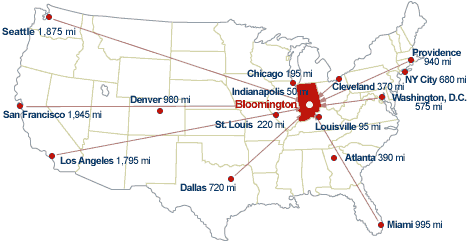
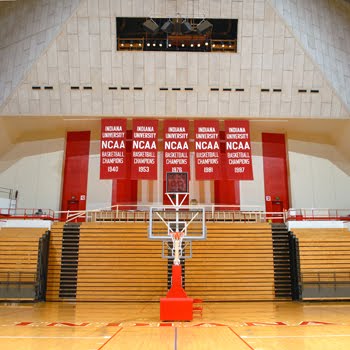




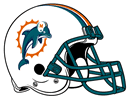


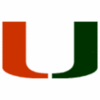
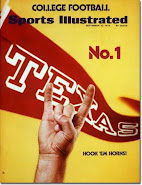

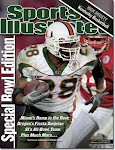
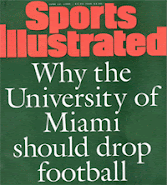
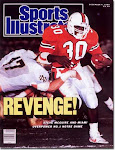
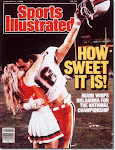
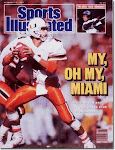

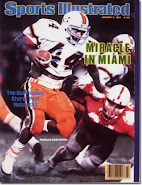
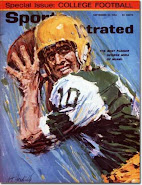
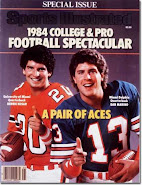

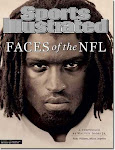
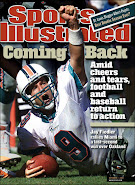
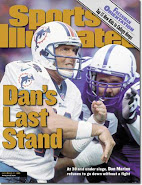
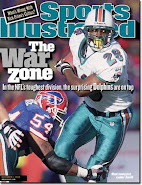
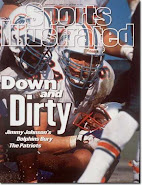

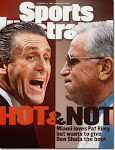
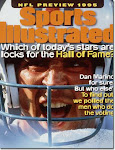
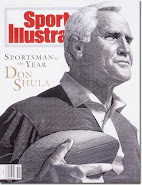
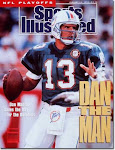
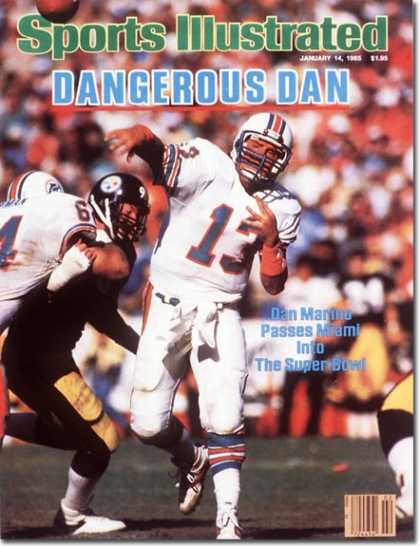

+Sep+10,+1984.jpg)
